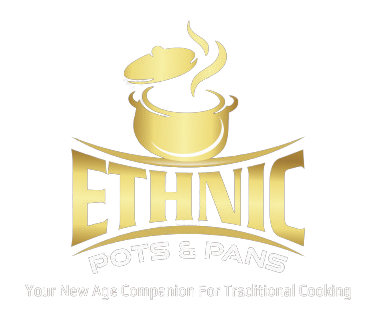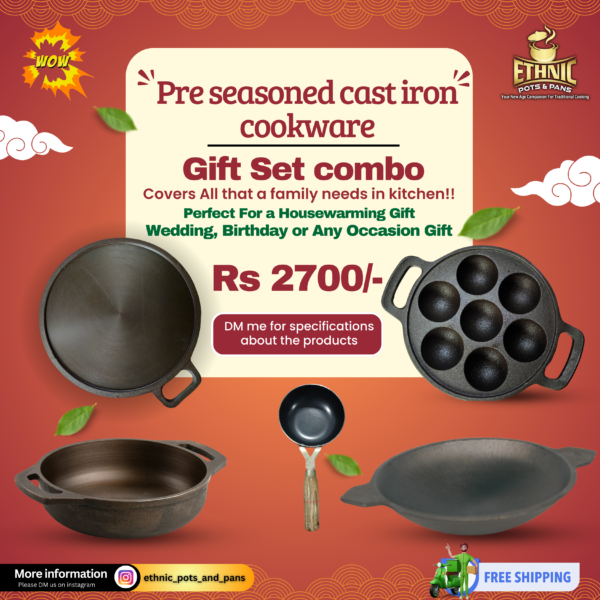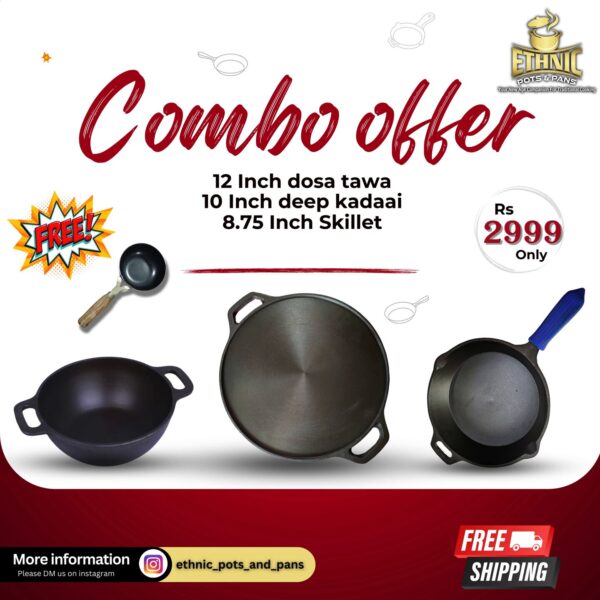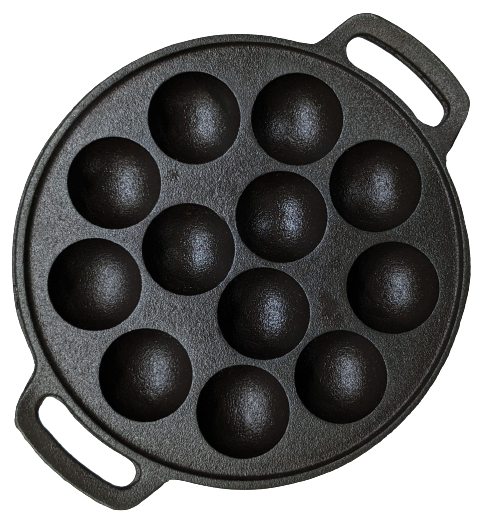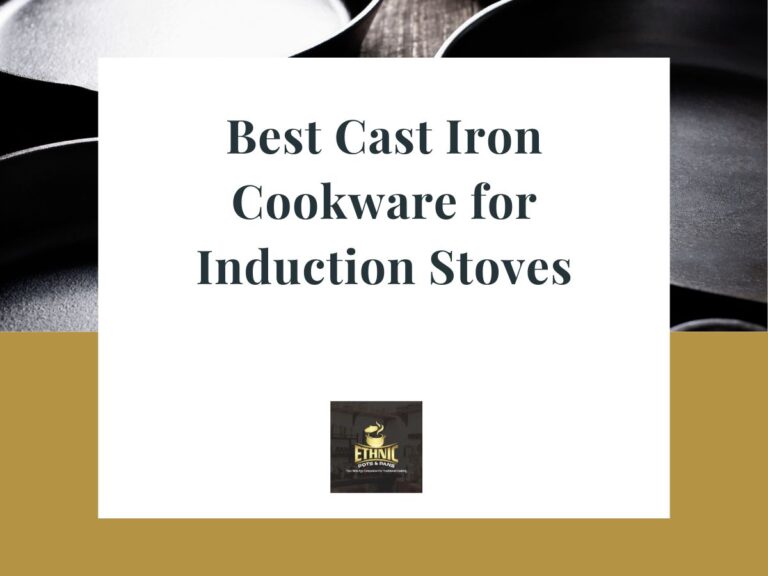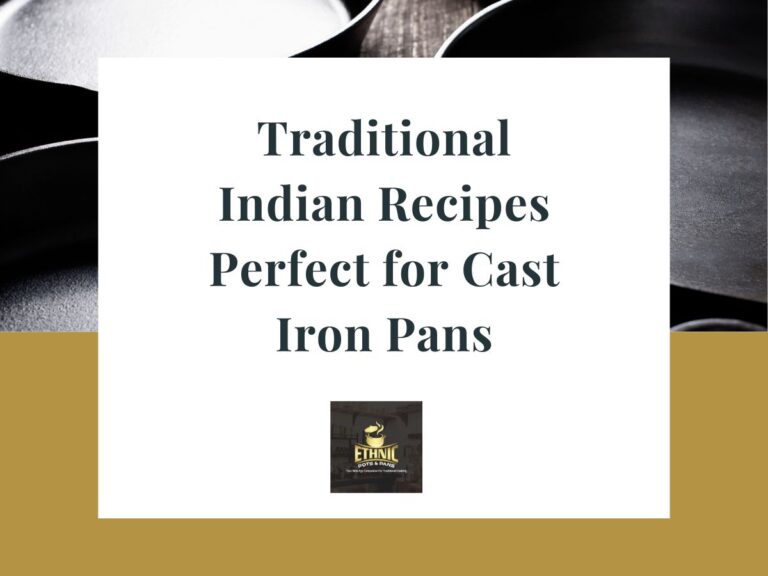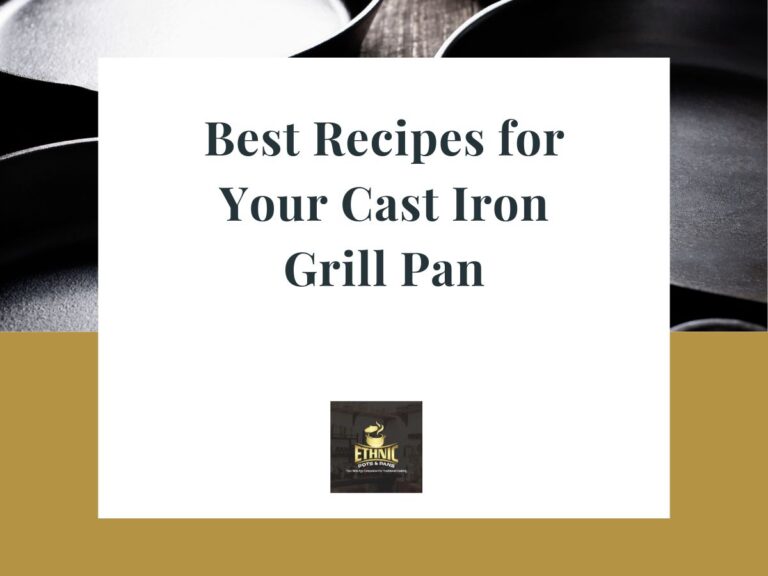Cast iron cookware is a beloved staple in many kitchens around the world, prized for its durability, heat retention, and ability to impart rich flavors to food. However, cast iron requires special care to maintain its seasoning and prevent rust. Proper cleaning is a crucial part of ensuring that your cast iron pans and skillets last for generations. At Ethnic Pots and Pans, we offer high-quality cast iron cookware that, with proper care, can become an heirloom in your kitchen.
In this guide, we will explore the do’s and don’ts of cleaning cast iron cookware to help you preserve its natural non-stick properties and longevity. Follow these tips to keep your cast iron in top condition and avoid common cleaning mistakes.
Why Cast Iron Cookware Requires Special Care
Cast iron cookware is unique because it requires a protective layer of seasoning, which is a polymerized layer of oil baked into the surface of the pan. This seasoning is what makes the pan non-stick and prevents rust. Improper cleaning can strip away this seasoning or introduce moisture that leads to rust, which is why it’s important to know the right techniques.
-
Beginners Combo/ Gift Set Combo – Pre-seasoned cast iron Combo
Original price was: ₹4,999.00.₹2,700.00Current price is: ₹2,700.00. -
Best Cooking Essentials Combo
Original price was: ₹5,999.00.₹2,999.00Current price is: ₹2,999.00. -
Pre-seasoned 12 Pits flat bottom paniyaaram pan
₹1,500.00 – ₹1,700.00
Suggested Reading: Cast Iron Tawa Buying Guide
The Do’s of Cleaning Cast Iron
1. Do Clean Cast Iron After Every Use
After cooking with your cast iron pan, it’s essential to clean it right away. Allowing food residue to sit on the surface for too long can make cleaning harder and might affect the seasoning. Here’s how to do it:
– Rinse with Warm Water: After cooking, let the pan cool slightly, then rinse it with warm water. Use a soft sponge or brush to remove any food particles.
– Use Salt for Stubborn Residue: If food is stuck to the surface, sprinkle coarse salt, such as kosher salt, onto the pan and scrub gently with a soft brush or sponge. Salt acts as a mild abrasive that helps clean without damaging the seasoning.
At Ethnic Pots and Pans, we recommend this gentle method as it helps preserve the pan’s seasoning while effectively removing food particles.
2. Do Dry Your Cast Iron Thoroughly
Moisture is the enemy of cast iron. After rinsing your cast iron cookware, it’s important to dry it completely to prevent rust.
– Wipe Dry: Use a clean cloth or paper towels to wipe the pan dry immediately after rinsing.
– Heat to Evaporate Moisture: To ensure that the pan is completely dry, place it on a stovetop over low heat for a few minutes. This helps evaporate any remaining moisture that may have seeped into the pores of the cast iron.
Pro Tip: If you notice any minor rust spots, this step will also help prevent them from spreading.
3. Do Apply a Thin Layer of Oil After Cleaning
After drying your cast iron pan, it’s a good practice to apply a thin layer of oil to maintain the seasoning. This will protect the surface and keep it ready for future cooking.
– Use Neutral Oil: Choose an oil with a high smoke point, such as vegetable oil or flaxseed oil, for this step. Apply a small amount to the pan, then use a paper towel to rub the oil into the surface, wiping away any excess.
– Heat the Pan to Set the Oil: If you like, you can place the pan back on the stovetop over low heat to allow the oil to bond with the surface. This step helps maintain the non-stick properties and prevents the pan from rusting.
At Ethnic Pots and Pans, we recommend this step for all cast iron cookware, as it helps build up the seasoning layer over time, making your pan even more effective.
4. Do Re-Season Your Pan When Necessary
Over time, cast iron cookware may lose its seasoning, especially if it’s used frequently or exposed to acidic foods. If food starts to stick to the surface or if the pan looks dull, it’s time to re-season.
– How to Re-Season:
1. Preheat your oven to 450°F (230°C).
2. Clean the pan thoroughly with warm water and mild soap (only during re-seasoning).
3. Apply a thin layer of oil to the entire surface of the pan, inside and out.
4. Place the pan upside down in the oven with a sheet of aluminum foil on the rack below to catch any drips.
5. Bake for 1 hour, then allow the pan to cool in the oven.
Suggested Reading: Cast Iron Dutch Oven Buying Guide
Re-seasoning your cast iron cookware regularly will keep it performing at its best, and at Ethnic Pots and Pans, we recommend this process every few months or when needed.
The Don’ts of Cleaning Cast Iron
1. Don’t Soak Your Cast Iron Cookware
Soaking cast iron in water for long periods can lead to rusting. Cast iron is porous, and prolonged exposure to moisture can cause the metal to oxidize.
– Why You Should Avoid Soaking: Even small amounts of water left on the surface of cast iron can promote rust. Instead of soaking, use the salt-scrub method or a brush to remove stubborn food particles.
2. Don’t Use Harsh Soaps or Detergents
Unlike other cookware, cast iron should not be cleaned with harsh soaps or detergents. Soap can strip away the seasoning, which is the layer of oil that makes the pan non-stick and prevents rust.
– When to Use Soap: While soap is generally avoided, there are a few exceptions. If your pan has been exposed to something particularly greasy or if you’re about to re-season it, a small amount of mild soap is acceptable. Just be sure to re-season the pan afterward to restore the protective layer.
At Ethnic Pots and Pans, we encourage minimal use of soap and recommend sticking to warm water and salt for everyday cleaning.
Suggested Reading: Cast Iron vs Teflon: Which Is better?
3. Don’t Use Steel Wool or Metal Scrubbers
Using steel wool, metal scrubbers, or abrasive cleaning tools can damage the seasoning on your cast iron cookware. This can lead to food sticking and make it easier for rust to develop.
– What to Use Instead: Opt for soft-bristled brushes, sponges, or a chainmail scrubber specifically designed for cast iron. These tools are gentle on the seasoning but effective at removing stuck-on food.
4. Don’t Store Cast Iron Without Oiling It
Once your cast iron cookware is clean and dry, never store it without applying a thin layer of oil. Leaving the pan unprotected can expose it to moisture in the air, which may lead to rust over time.
– How to Properly Store Cast Iron: After applying a thin layer of oil and wiping off the excess, store your cast iron in a dry place. Avoid stacking cast iron pans directly on top of each other without placing a paper towel or cloth between them to prevent scratching or damaging the seasoning.
How to Fix Common Cast Iron Problems
Even with proper care, issues can arise with cast iron cookware. Here are some common problems and solutions:
1. Rust Spots
– Solution: If you notice rust spots, scrub them away using steel wool or a brush. Once the rust is gone, re-season the pan immediately.
2. Sticky Surface
– Solution: A sticky surface usually occurs if too much oil was applied during seasoning. To fix this, heat the pan in the oven at 450°F (230°C) for 1 hour to burn off the excess oil.
3. Food Sticking
– Solution: If food is sticking, it’s likely that the pan needs to be re-seasoned. Follow the re-seasoning steps to restore the non-stick layer.
At Ethnic Pots and Pans, we’re here to help with any cast iron care questions and provide quality cookware designed for long-term use.
Properly cleaning and caring for your cast iron cookware ensures that it remains a reliable tool in your kitchen for years to come. By following these do’s and don’ts, you’ll maintain the seasoning, prevent rust, and keep your cast iron looking and functioning like new.
At Ethnic Pots and Pans, we are committed to helping you make the most of your cast iron cookware. By taking the time to clean and care for it properly, you’ll enjoy the benefits of superior cooking performance and enhanced flavors every time you use it.
